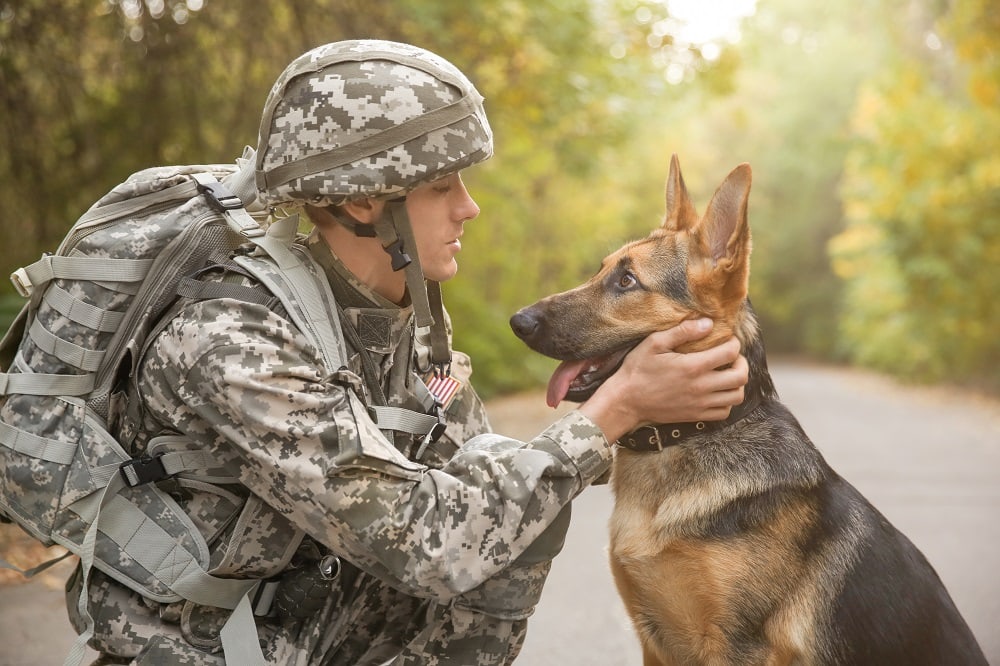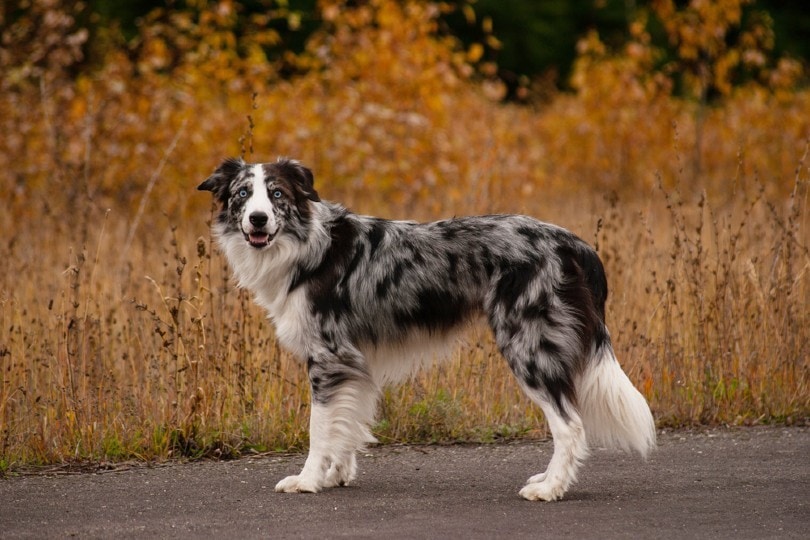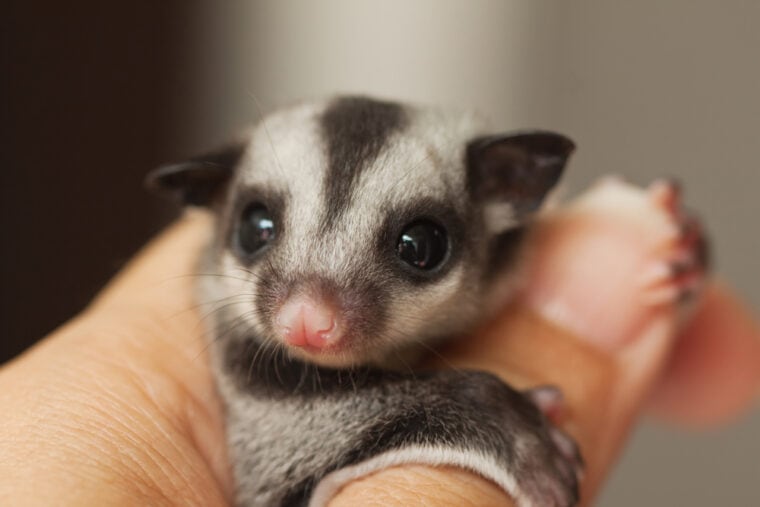
Sugar gliders may look cute and cuddly, but can you actually cuddle them? These exotic pets are loved by their owners for their soft fur and affectionate personalities. They tend to make good pets if you take care of them properly. And when it comes to physical contact, you’ll be happy to know that many sugar gliders are all for it! Most sugar gliders love to be held and petted by someone they trust. But it is important to build a strong relationship with your sugar glider and respect their needs.
If you are in the United States, take note that it is illegal to own sugar gliders in certain states. Check with the United States Department of Agriculture’s Animal Care office in your state to find out whether the laws in your area permit ownership of sugar gliders. If you own 4 or more breeding female sugar gliders, you may be subject to the Animal Welfare Act, which may require you to obtain a license and register your pets. If you’re not in the US, check all relevant legislation before adopting or breeding sugar gliders.
Sugar Glider Social Behavior
Learning more about sugar glider behavior is a great way to get a better sense of what kinds of physical contact they like. Unlike cats and dogs, sugar gliders are exotic animals that haven’t been domesticated. That means that they aren’t bred to get along with humans. But sugar gliders are social mammals. That means it’s a little easier for sugar gliders to “adopt” humans into their social circle because we have some things in common.
In the wild, sugar gliders live in colonies of up to ten individuals. They care for each other and form strong bonds. To a sugar glider, there’s a big difference between family and strangers. That’s why even a well-socialized sugar glider can get scared around new people.
Sugar gliders identify each other through scent. The dominant male in a group of sugar gliders marks on all members of the “family.” Any sugar glider entering the family’s territory without that scent can be a target for aggression. Your sugar glider will also mark you and anything in their surroundings with their scent.
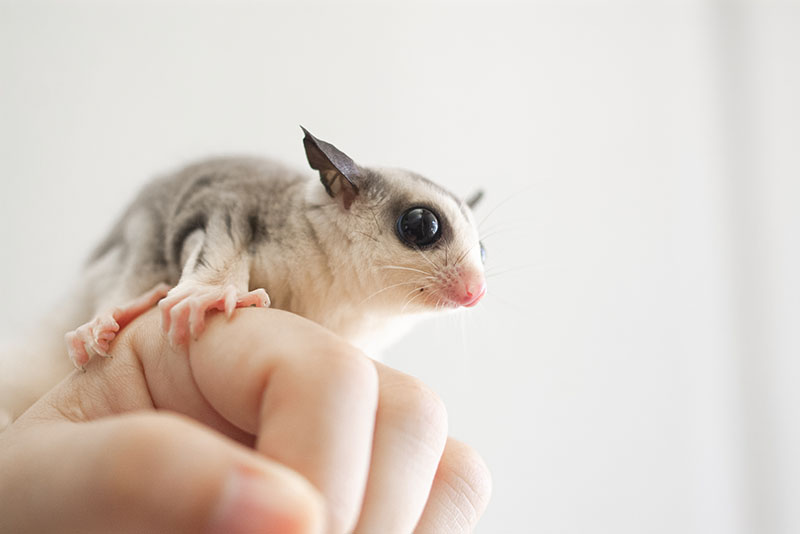
How to Hold and Pet Your Sugar Glider
Not every sugar glider likes to be held, but many do. When you hold a sugar glider, you want to help them feel safe and comfortable. That means you don’t want to manhandle your glider—like grabbing them by the tail or scruff of the neck. You also don’t want to pick up your glider if they’re acting scared or timid. Instead, you want to let your glider sit in your hands and relax. Many sugar gliders like to curl up in a shirt pocket, and you can even buy little pouches to hold your sugar glider in! Imagine that your sugar glider is thinking back to the days when they were warm and safe in its mother’s pouch.
When you pet your sugar glider, you want to be gentle. Don’t poke or prod them, and don’t keep petting if they seem uncomfortable. They often like to be scratched gently on their head or under their chin. In return, your glider might “groom” you by licking and nibbling your hands. They might pick at scabs or dry skin. These nibbles aren’t meant to be painful or aggressive, but they may inadvertently cause you pain.

Helping Your Sugar Glider Bond
Sugar gliders need a lot of social time to form a strong bond with their owners. Here are some tips and tricks to help you become family to your sugar glider.
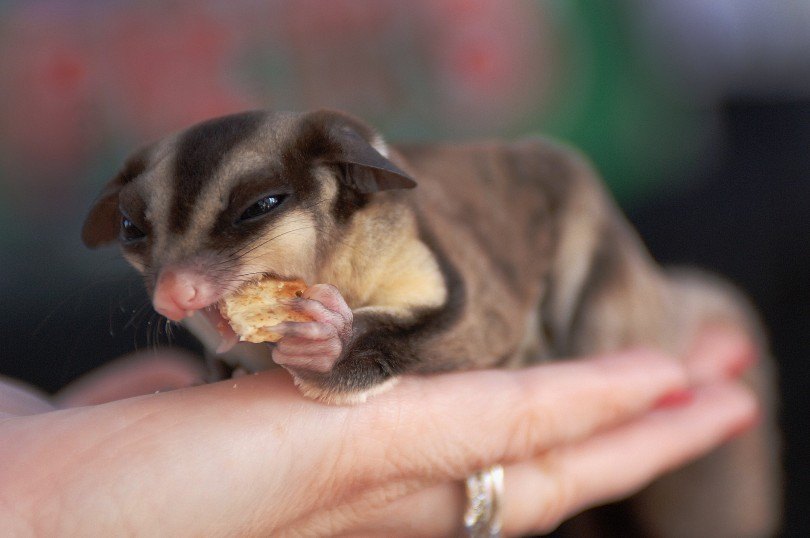
Last Thoughts
Exotic pets can be difficult to care for, but that doesn’t mean they hate affection. Sugar gliders often love being held, petted, and interacted with. As long as you take it slowly and respect your glider’s space, you’ll be sure to build a strong bond. And while not every glider likes to be pet or held in a specific way, over time, you’ll find something that works for you.
Featured Image Credit: Praisaeng, Shutterstock



